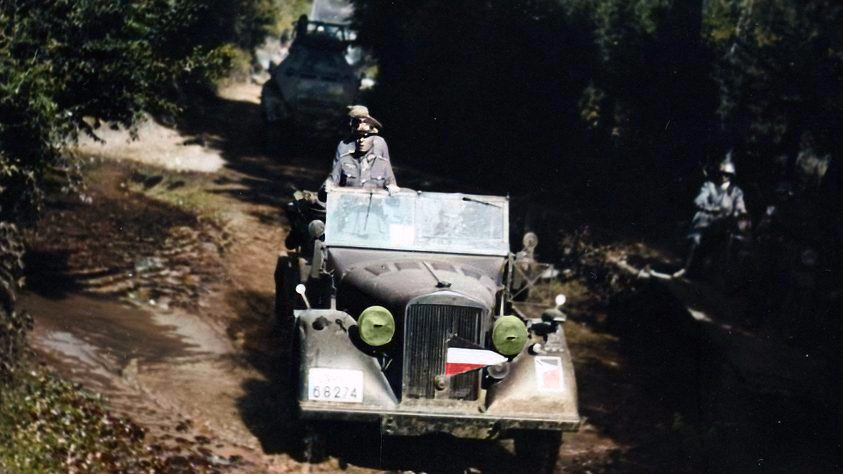During the intense and rapid invasion of France in May 1940, General Erwin Rommel, the commander of the 7th Panzer Division, was captured in this striking photograph.
He stands in his Horch 901 staff car, a versatile and common military vehicle used by the German army throughout the war, with approximately 15,000 units produced.
As Rommel’s division surged forward, this car served as a mobile command post, allowing him to maintain his famously hands-on approach to leadership, often directing the charge from the front.
The photograph provides a fascinating glimpse into the details of a divisional commander’s vehicle. The car is clearly identified as belonging to the Divisional Headquarters by the black, white, and red triangular pennant flying from the front. Smaller versions of this same pennant would be displayed on the cars of other officers on Rommel’s staff.

Another notable feature on the vehicle is the set of blackout slit covers fitted over the headlights. These were a critical measure for ensuring military vehicles could travel at night while remaining as inconspicuous as possible. By channelling the light through a narrow opening, the covers drastically reduced the vehicle’s visibility from the air and from a distance, making it more difficult for enemy forces to locate and target the advancing German column. This seemingly minor detail highlights the importance of light discipline in a total war, where every effort was made to minimise vulnerability on the battlefield.
On the front-right fender of the leading vehicle, a five-digit registration number, 68274, is faintly visible. The preceding letters, while blurred by the image’s exposure, are almost certainly ‘WH’, which designates the vehicle as part of the German armed forces, the Wehrmacht. This detail, despite the lack of clarity, is a key indicator of its military origin and purpose.
Directly behind this vehicle, is an Sd. Kfz. 232 (8-Rad), fitted with a large frame aerial, and medium range radio. This particular one served as his communications vehicle during the Battle of France so it had to be on hand at all times.
To the right side of the road, a pair of German motorcycles are also present. These could be despatch riders. I love investigating historical images. What else can we glean from the picture?
